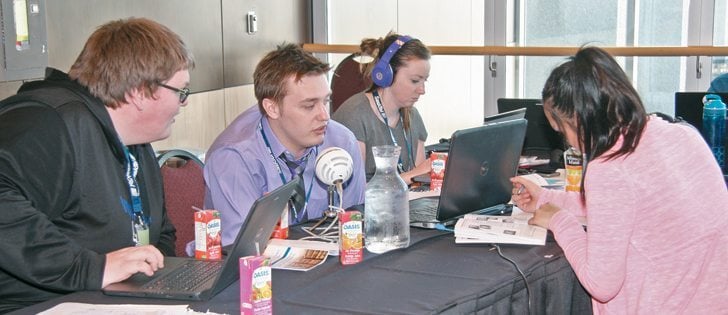Lynette Dyck home schools four of her children on the family farm outside of Swift Current, Sask.
And in conversation with Dyck, it is likely that her three-year-old will probably make that five in a few years.
She believes that educating a child at home, surrounded by family, yields net benefits that extend beyond academics to improved character and behaviour.
It’s also allowed her to implement a unique program for her 12-year-old daughter who has autism.
There are challenges to home schooling in a rural environment as pulling children out of small rural schools can put them on the brink of closure.
Read Also

Rural Manitoba resources slim on natural disaster planning
A study from Brandon University’s Rural Development Institute has found that many rural and small municipalities don’t have the staff or resources to make formal climate plans against natural disaster.
It can also be difficult to access public facilities during daytime hours in small centres where home school families aren’t catered to, she said.
On the positive side, home schooling keeps the children at home, connected to the family and family business, which includes raising sheep and selling hay.
“When we get some reward for a crop or by selling a product, they share in that reward as well. They see the work ethic of the parents.”
Dyck was in Saskatoon last month for the Saskatchewan Home Based Educators conference and attended a presentation on home schooling a child with a label and/or disability presented by Sylvia Funk of Pathways for Neuroeducational Development.
Dyck uses a neurodevelopmental program for her autistic daughter.
Funk and the Okotoks, Alta.-based Pathways work with children with a variety of labels, everything from brain injuries to learning disabilities to autism. But labels, said Funk, only describe symptoms.
“I help them from the brain’s perspective to ensure that their development is enhanced and continues and that they’re able to reach their intended potential,” said Funk.
Funk tries to find areas of inefficiency, such as auditory processing or atypical pain awareness, which are inhibiting the child’s academic, social, physical or behavioural performance and develop a program of therapies that cam be implemented by parents.
Dyck said her child couldn’t speak or show affection and choked on every meal.
“We’ve had a lot of success,” she said. “
We still have a long ways to go.”
Funk said successful programming can result in improved behaviour, listening and written and verbal communication.
Funk, previously from Drake, Sask., has been training in this field for eight years, and previously implemented a program for her own son, whose fine motor skills were five years delayed.
“The teachers didn’t understand why he was the way he was. He looked normal. He had good behaviour,” she said. “For a child with autism, especially a well-behaved child, you cannot see that difference and I thought I’ve got to get him out of that. It’s like a pressure cooker for him. They were expecting things out of him that he was not able to do.”














